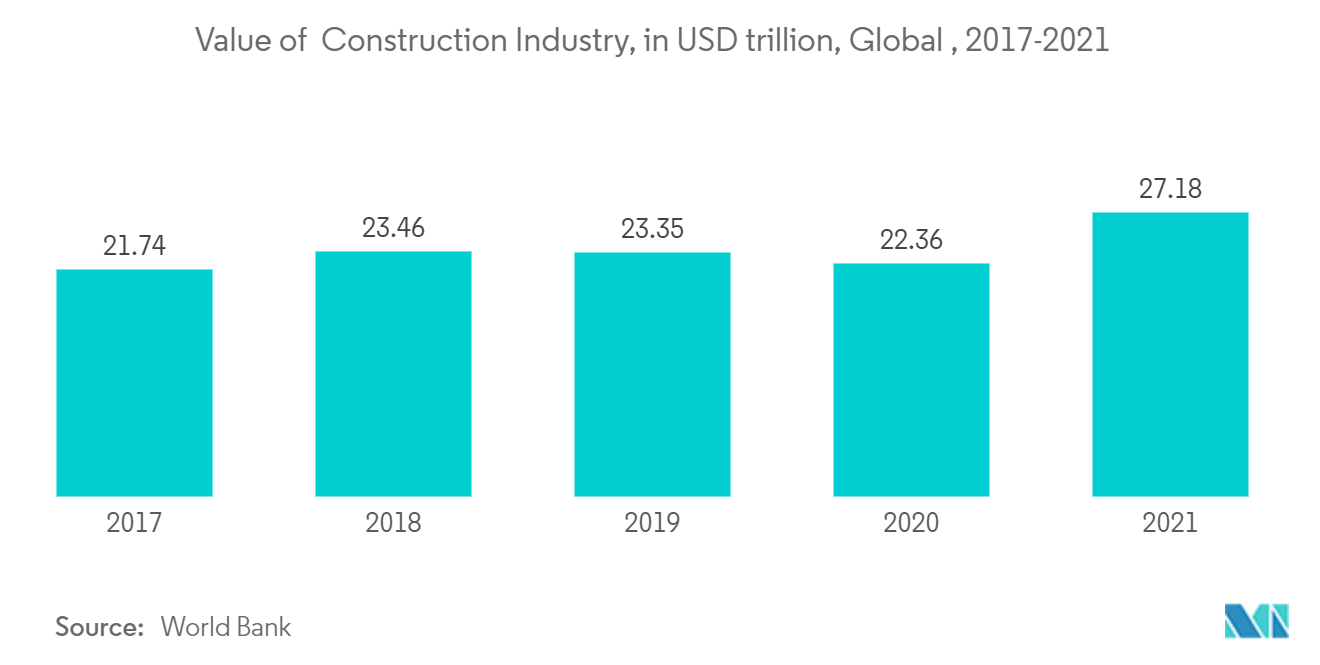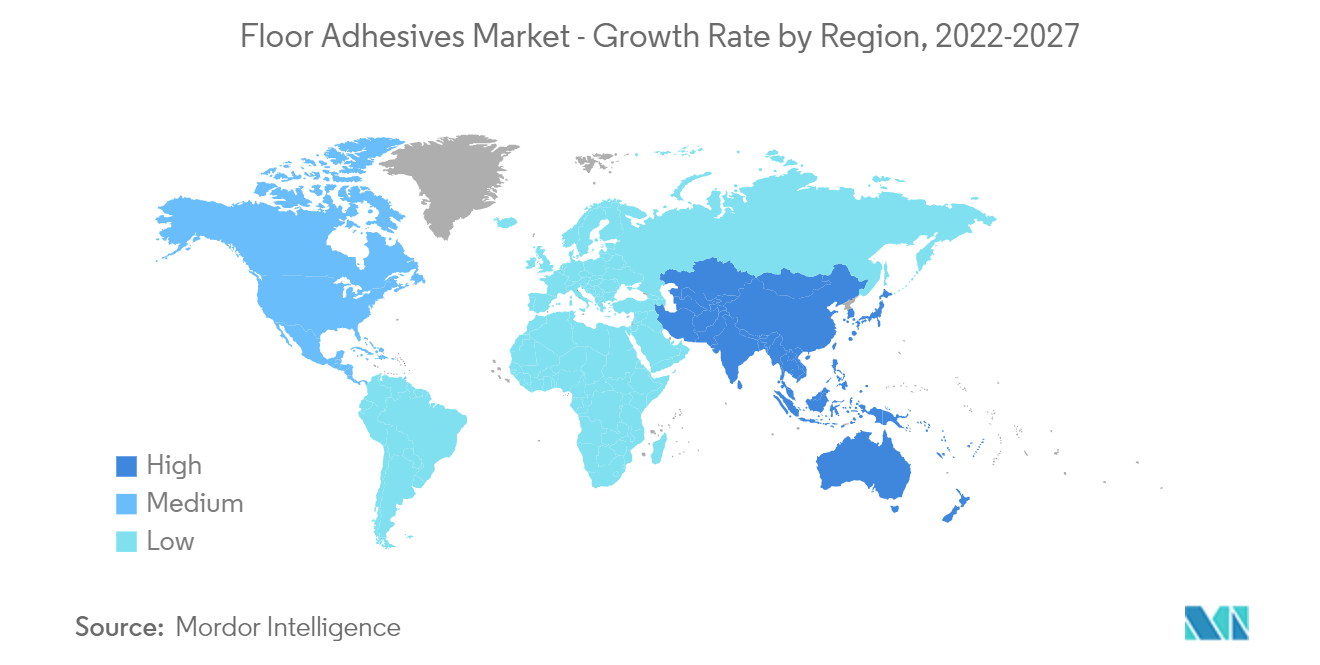Market Trends of Floor Adhesives Industry
This section covers the major market trends shaping the Floor Adhesives Market according to our research experts:
Increasing Demand from Residential End-user Industry Segment
- Tile and stone adhesives are the most commonly used adhesive type in the residential end-user segment. Additionally, the residential segment is the largest and fastest-growing segment in the market studied.
- The rising middle-class population, coupled with the increasing disposable incomes, has facilitated an expansion in the middle-class housing segment, thereby increasing the use of flooring adhesives.
- According to the World Bank, the value of the global construction industry has increased from USD 22.36 trillion in 2020 to USD 27.18 in 2021.
- The highest growth is expected to be registered in the Asia-Pacific region, owing to China and India's expanding housing construction markets. These two regions are expected to represent over 43.3% of the global middle class by 2030. The Government of India reduced the GST taxes for housing from 12% to 5%. This tax redemption may increase the construction market for middle-class housing.
- Furthermore, in October 2021, Sao Paulo State Housing Union (Secovi-SP) recorded 5,555 new residential units sold in Sao Paulo, Brazil. The number is likely to rise, owing to the increase in consumer spending on residential housing units. Moreover, the growing trend for single-family housing in Brazil is likely support the residential construction industry in the upcoming period.
- Mexico's housing starts and inventory levels reached a 10-year low due to a sharp cut in the federal housing subsidy program and the pandemic that triggered a severe recession. The Programa de Vivienda Social, or social housing program, had a budget increase of 179% to USD 200 million in 2021, thus, supporting construction spending. Moreover, accessible loan facilities and favorable mortgage schemes are expected to benefit residential construction in the country.
- The low-cost housing segment is rising steadily, primarily due to government initiatives to provide affordable housing to the poor in urban and rural regions.
- The consumption of flooring adhesives in constructing low-cost houses is comparatively less than other types of houses. Various countries across the world are providing shelter to refugees from other countries. Hence, governments offer temporary or permanent low-cost housing to refugees.

Asia-Pacific Region to Dominate the Market
- The Asia-Pacific region dominates the global floor adhesives market share. With growing construction activities in countries such as China, India, and ASEAN Countries, the consumption of floor adhesives is increasing in the region.
- The Chinese government has rolled out massive construction plans, including making provisions for the movement of 250 million people to its new megacities, over the next ten years, despite efforts to rebalance its economy to a more service-oriented form.
- The National Bureau of Statistics of China reports that the market for construction works in China increased from CNY 23.27 trillion (USD 3.34 trillion) in 2020 to CNY 25.92 trillion (USD 3.72 trillion) in 2021.
- The country has the largest construction market in the world, encompassing 20% of all construction investments globally. China is expected to spend nearly USD 13 trillion on buildings by 2030. China is promoting and undergoing a process of continuous urbanization, with a target rate of 70% for 2030.
- Because of the government's increased attention to infrastructure projects and the predicted rapid rebound in demand for both residential and commercial segments, the construction sector was expected to grow by 10.7% in FY22. Hence, the growing construction activities in the country are expected to increase the demand for floor adhesives.
- Various policies implemented by the Indian government, such as Smart City projects, Housing for All by 2022, etc., are expected to bring the needed impetus to the slowing construction industry. Moreover, recent policy reforms, such as the Real Estate Act, GST, and REITs, are expected to reduce approval delays and strengthen the construction sector over the next few years.
- According to statistical office data, construction orders won by South Korean builders in 2021 increased by double digits due to robust international demand. According to Statistics Korea, construction orders collected by local builders both at home and overseas totaled USD 245.9 billion in 2021, up by 31 trillion won from 2020.


